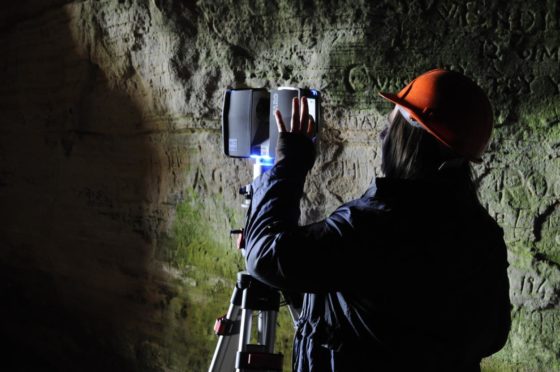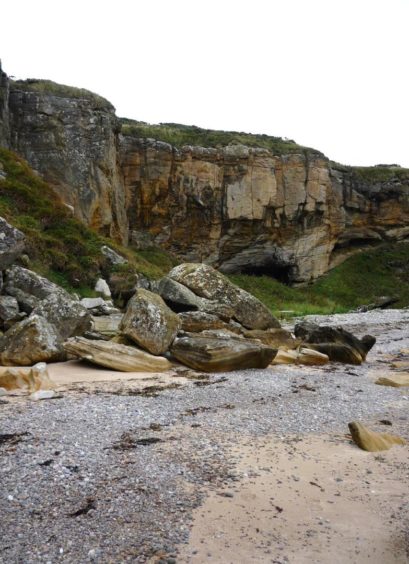Rare artefacts and the remains of a mummified bodies have revealed Moray’s ancient burial practices dating back more than 3,000 years in a new book.
A sea cave on the south shore of the Moray Firth is the focus of the Society of Antiquaries of Scotland’s latest publication, Darkness Visible: The Sculptor’s Cave, Covesea, from the Bronze Age to the Picts.
The book, written by Professor Ian Armit, Chair in Archaeology at the University of York and Dr Lindsey Büster, a Research Associate at the University of York, reveals the secrets of the difficult to access cave in the north-east.
Mrs Büster said: “The Sculptor’s Cave represents one of the most intriguing later prehistoric sites in the UK and provides a window into the complex rituals used by past inhabitants of Moray to navigate the difficult transition between life and death.”
The Sculptor’s Cave is named after a series of Pictish symbols which were carved into its entrance walls over 1,500 years ago.
Since excavations began in 1928, the ancient site’s most stunning finds include ten 3,000-year-old gold-covered hair-rings and the most northerly Roman Iron Age coin hoard of its kind.
In the late 1920s, excavations uncovered hundreds of bones, cementing the cave as a place of special significance to the ancient people of Moray.
It’s believed that around 3,000 years ago, in the Late Bronze Age, the mummified remains of children were brought to the cave and may have been displayed or curated on rack-like structures at the cave entrance, but why remains a mystery.
The majority of human remains found during 1928 to 1930 were lost.

